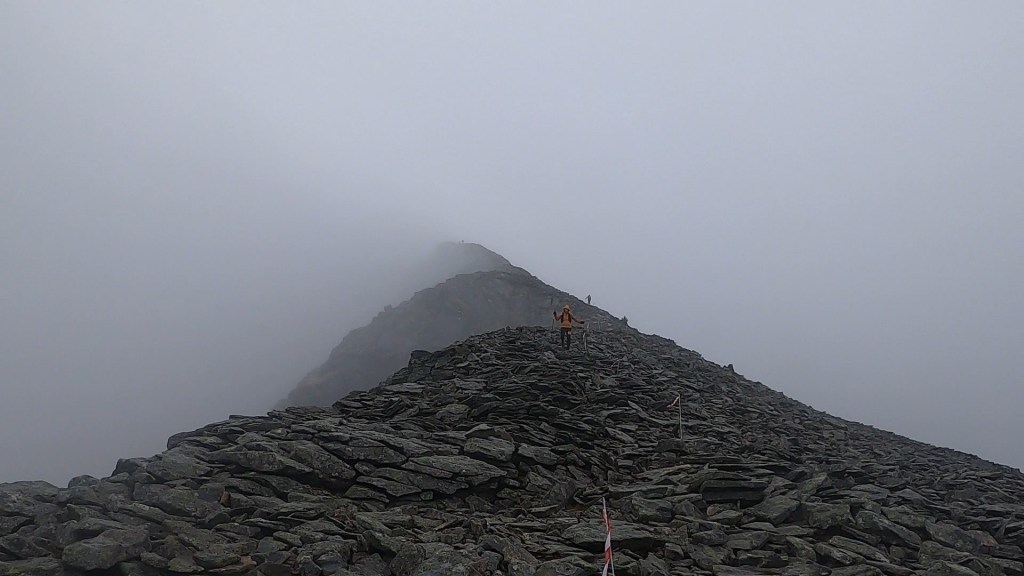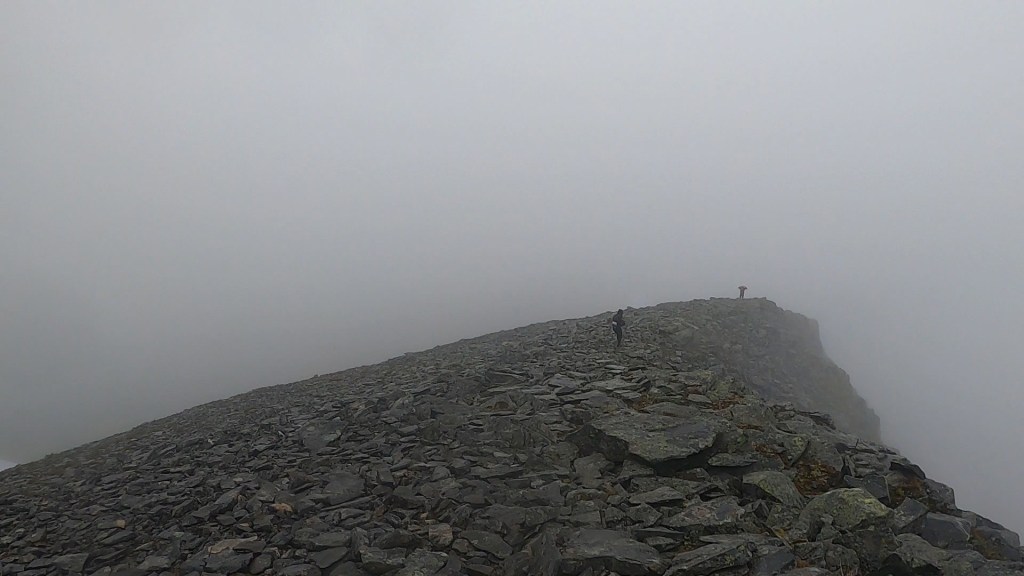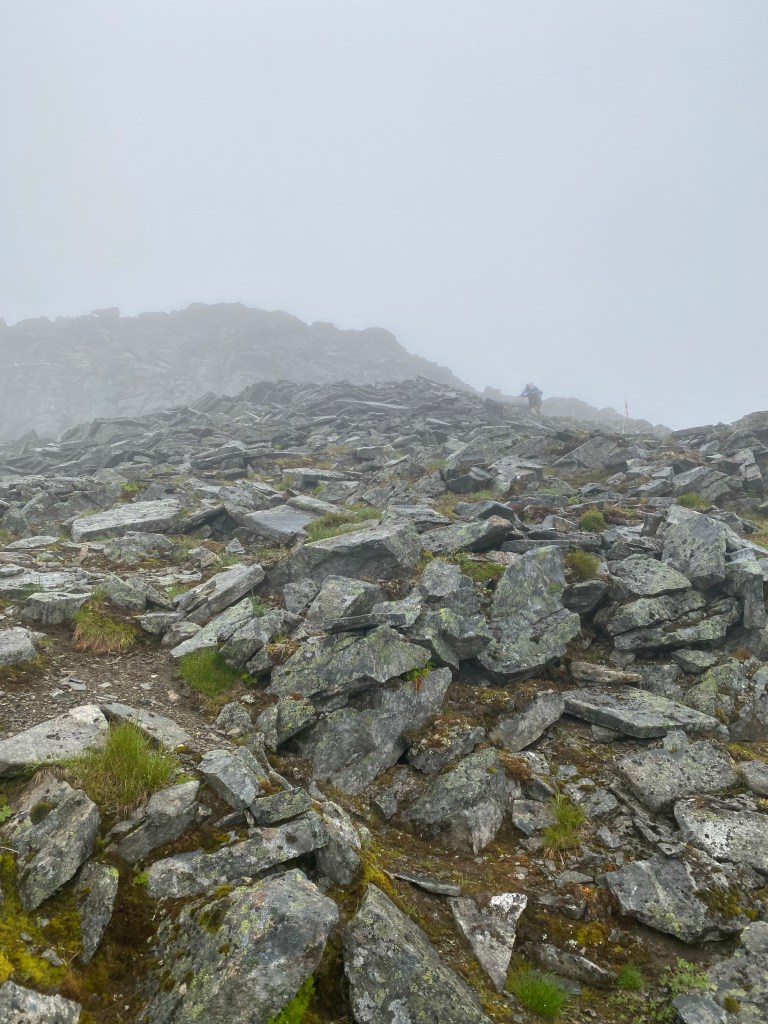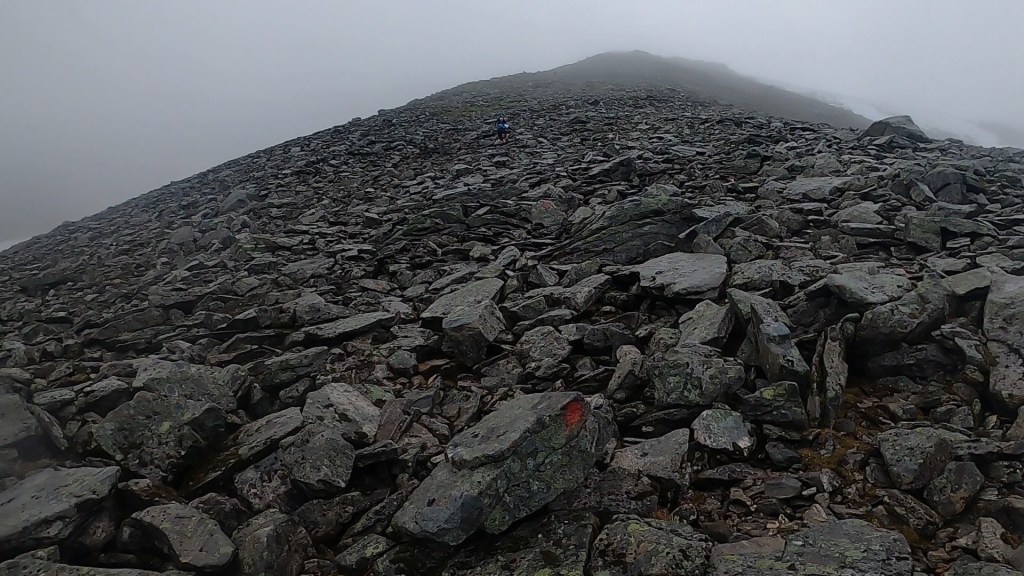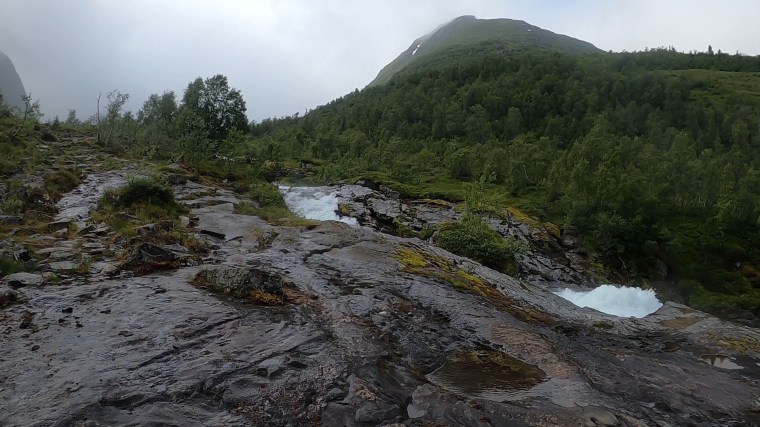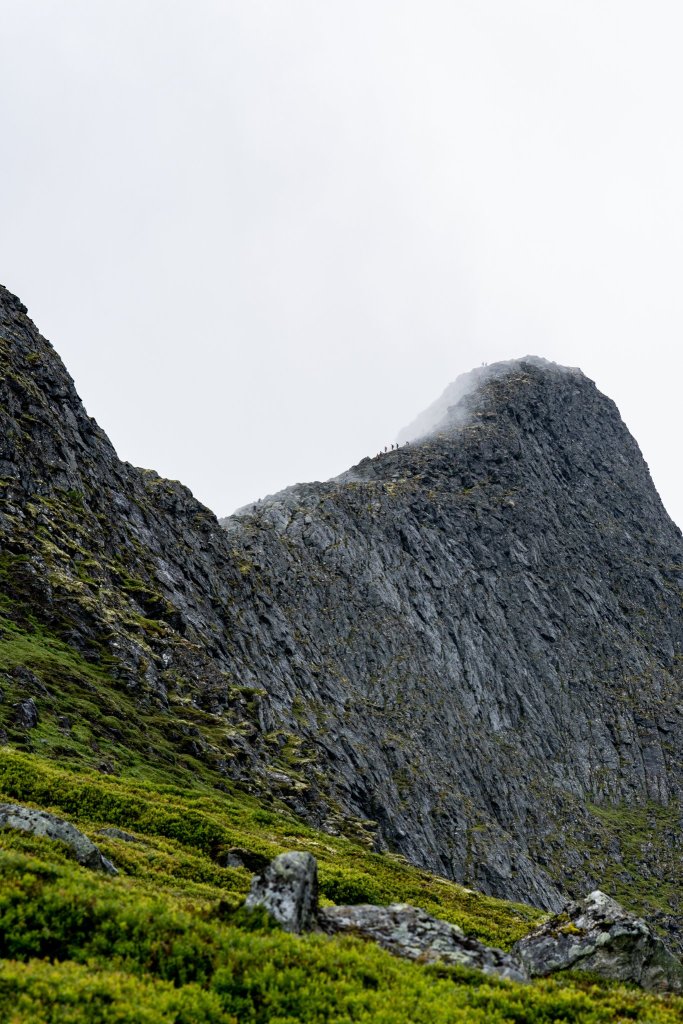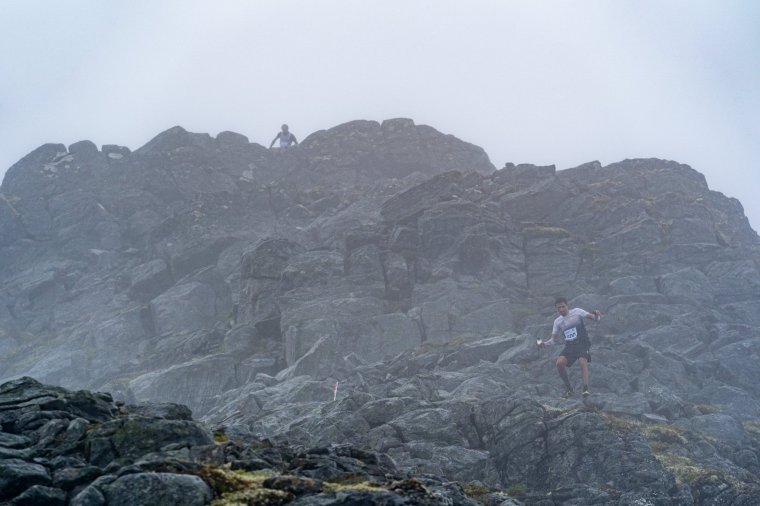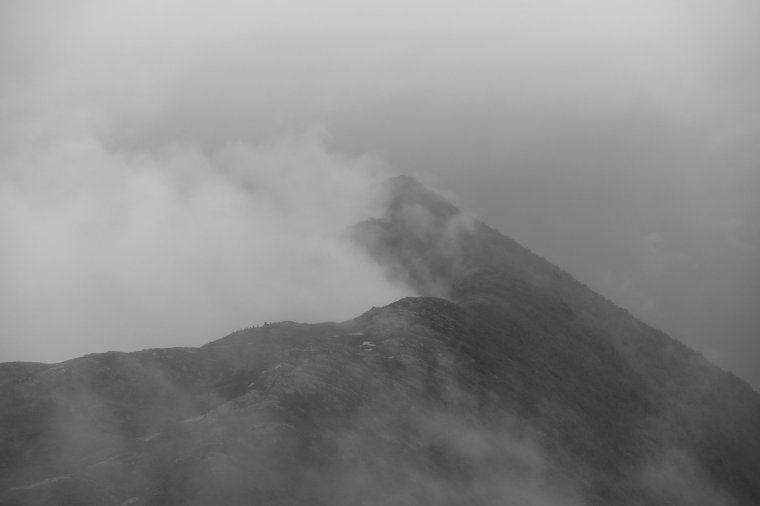The Arctic Triple 100 mile ultra trail in Lofoten, Norway. An event I eagerly looked forward to but one for which my preparation was screwed before I even signed up. Back in 2022 I’d already signed up to Transylvania 100 and Mozart 100 for 2023. When Matt floated the idea for this race in Norway, and him and Paul signed up, I was torn. It ticked every box on our criteria for an adventure. Trouble was, it was a week after Transylvania (we’d actually start 4.5 days after the finish time of Transylvania!) and two weeks before Mozart. This was not an ideal time to squeeze a 100 mile event into my year. But I did, of course I did! I signed up. My plan was simply to survive and enjoy Transylvania without wrecking myself before Lofoten. That didn’t quite go to plan and the race in Romania was far harder and more damaging to my body than I’d hoped for. Come Monday, I could barely walk. Besides bruising to my right quad, my feet were in pieces. They were so sore and covered in blisters. It was 3 days of soaking them in salt water, applying creams and ointments and hoping for miracles.
By Thursday, miracles had happened. Somehow my feet had healed pretty well, well enough that I wasn’t in any discomfort, maybe still missing a few important layers of skin, but after a self inflicted stressful few days I was confident again. All that was left was the day-long journey to Svolvaer where the race headquarters and finish line was based. That night, I wrapped my feet as best I could in hypercolloid dressings and KT tape. I hoped this would buy me a bit more time during the race before further damage was suffered. I also opted to wear waterproof socks to start the race (which turned out to be the best decision I’d made that week!).
The next day the journey to the start line began, this was like an ultra in itself – it involved a 2 hour bus from Svolvaer to Reine and then a 30 minute boat ride to Kirkefjord. The bus journey to Reine was scenic and gave a good first insight into the stunning scenery and terrain of the peninsula. We drove around the islands and mountains making up the landscape and crossed bridges and went through tunnels that connected all the islands. The mountains were quite a sight and dominate the skyline.

At Reine we left the bus to get a boat across the fjord to Kirkefjord where the race would start. Due to some logistical issues, the planned ferry boat wasn’t available, therefore smaller boats would complete the transfer. This worked out amazingly for us as we were stopped before boarding the boat that was waiting when our bus arrived as it was full. Instead we were directed to a smaller speed boat/dingy. This meant donning a life/body suit. I made sure we were first in line to get suited and booted. This boat looked so much fun! Straddling the seats we held on as the boat sped off. Wow. What a way to start a race and what an experience bouncing along the water, the wind and rain battering our faces. The attempts to disembark were then hilarious as we tried to climb up the jetty and needed pulling up from the marshals directing us in.


We had about 45 mins before the start and spent it sitting in a wood cabin on the ‘pier’ to take shelter from the rain and exploring a vacant building. At midday, as we made our way to the start line, we found ourselves at the front of the runners. This made us giggle as we did not belong there, but we embraced it as we set off, momentarily leading the other 70 or so runners into the adventure that awaited…
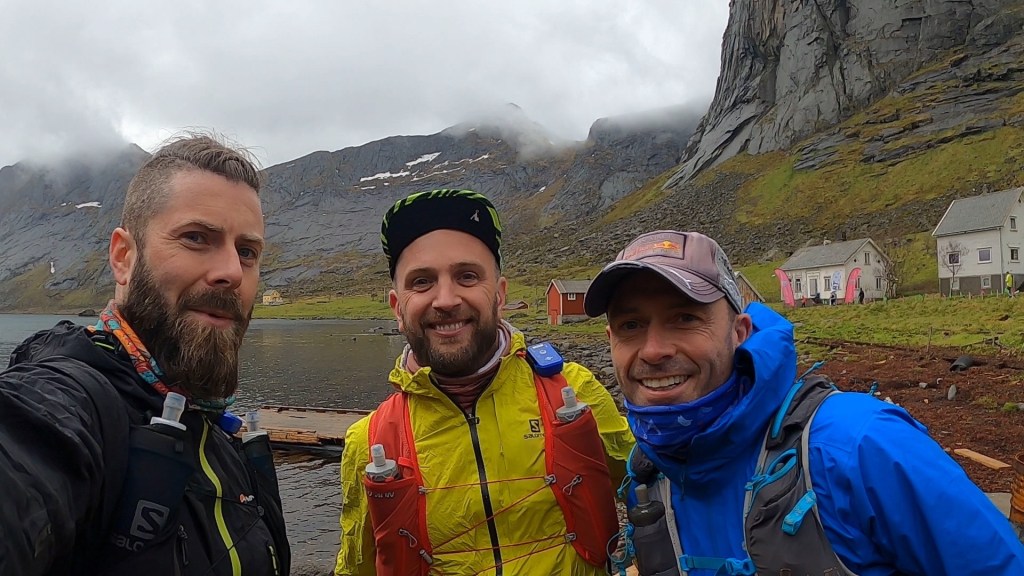

The race starts with two steep climbs. The first about 100m and the second a bit more punchy at around 350m. Straight away I was huffing and puffing. The terrain was mountainous, rocky and wet with water streaming down the slopes. The incline was sharp and the gradient reached a good 30 degrees in places. Runners inevitably started passing us as we climbed. As we reached the top the of the first climb the fun began. Groups of runners started passing us at speed as we tried to navigate the slippery, rocky terrain. In some parts small remnants of snow made the rocks extra slippery. I wasn’t ready for more snow after last weeks fun in Romania. I was making my way tentatively.
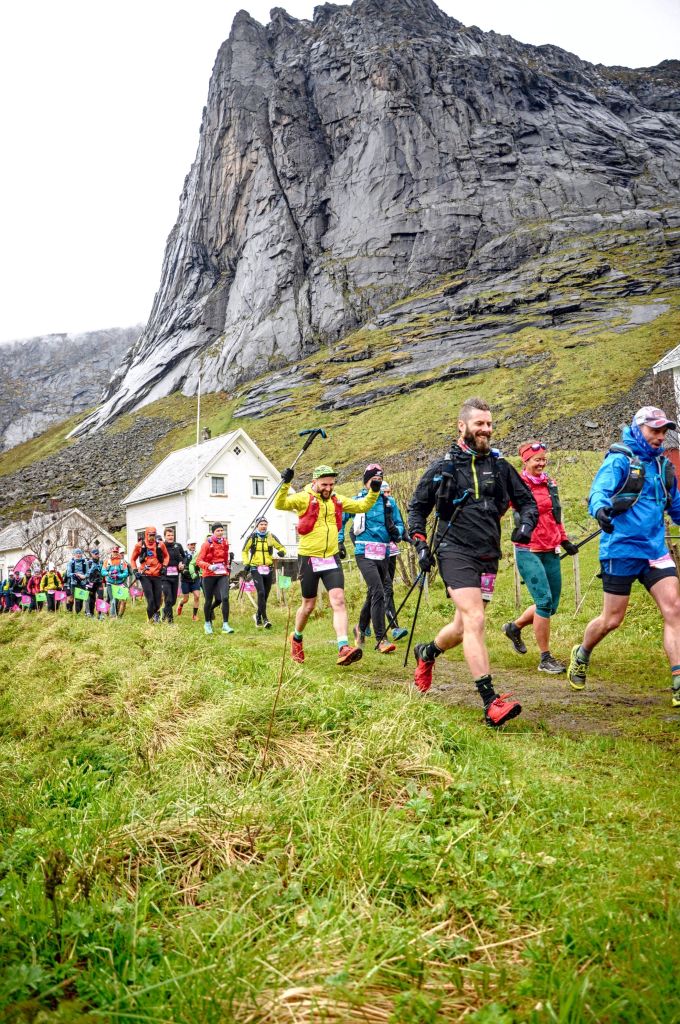
I cautiously crossed the trails connecting down to the second, steeper climb. I fell a few times along the way, slipping off the large boulders we had to traverse. As we began climbing again the story repeated itself. After reaching the top another tranche of runners went passed. We were now near the back of the field already. We’d barely been running an hour and already couldn’t keep pace with everyone!
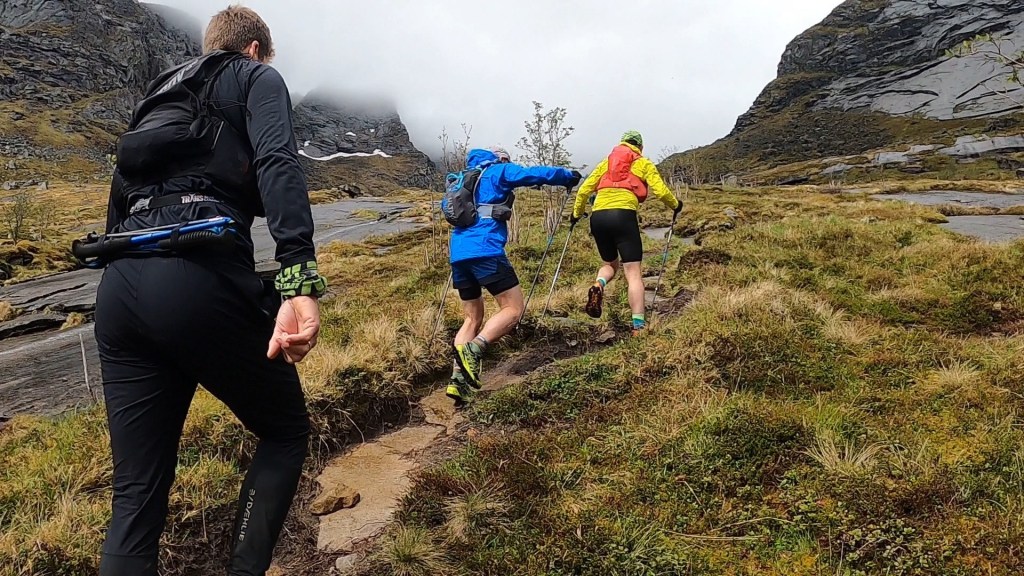
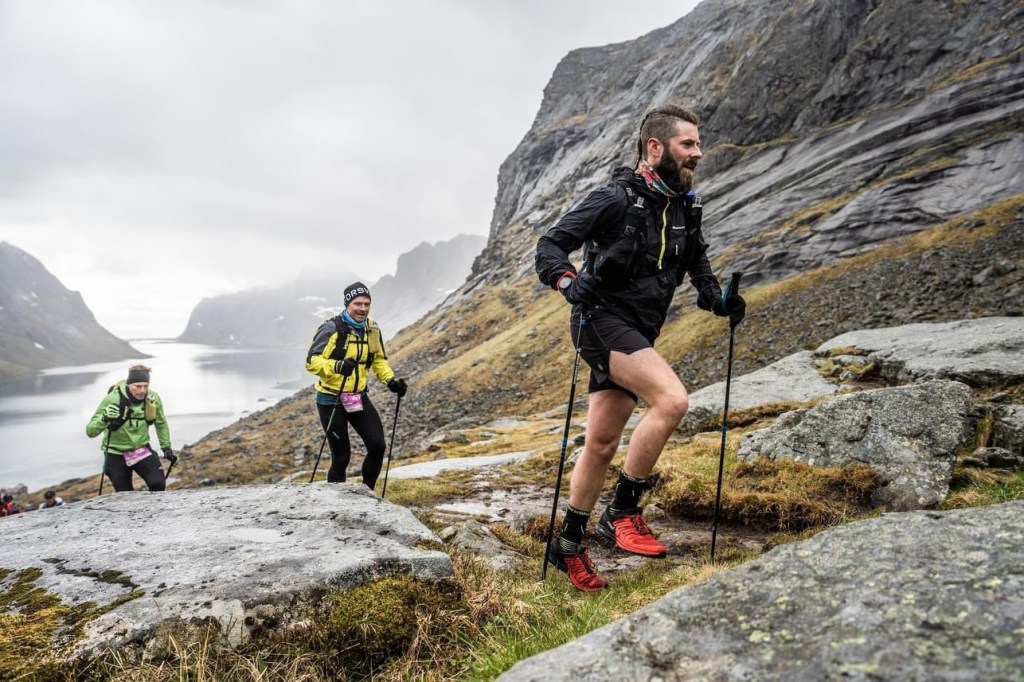
The race description and briefing did indicate that the first 20km or so made up some of the harder sections of the race, so we weren’t disheartened just yet (even if we were only about 6km in!). Besides, from here we began the route towards the beach at Kvalvika as we descended again. We had a short road section and the first checkpoint with refreshments before we were heading off track again towards the beach with a short climb and descent along the way. Here we started to be caught by some of the relay runners who started after us. You can also cover the 100 miles in a team of up to ten people. In 2024 they are also offering the 100 mile event as a multi day adventure. The views, despite the wind and rain were incredibly pleasing on the eye. We knew about this beach after watching the short film ‘Nordfor Sola’. It’s about two young men who embark on an adventure and spend 9 months living on the remote beach, building a ‘cabin’ out of materials that wash up on the shore and that they salvage.



The beach is split into two sandy bays. As we reached the first, the trails took us right to the coast. By now Matt had fallen numerous times, the last one spraining his wrist. He was in pain, but masked the pain with his excitement of reaching the beach. The descent to the beach itself was very challenging. We clambered over large boulders and loose rocks, lowered ourselves down cracks and used ropes and chains to reach the beach. It took a little navigating for us to find our way down and the rope descent was tough going, even if it wasn’t very high! We immediately then had to climb and clamber back up and over the wet rocks to work our way around the coast.
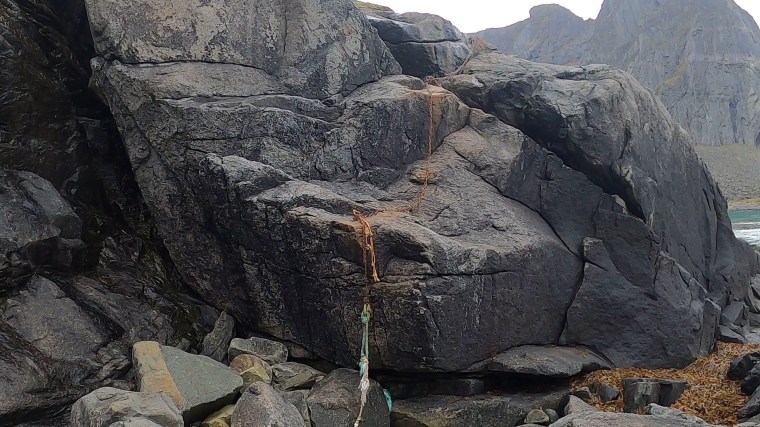
Eventually we reached the second beach. The one made famous from the film. In the distance we thought we could see the the makeshift chimney from the cabin. A surfer was preparing himself for a dip in the vast Atlantic ocean as we began the long, wet climb away from the beach. Again, barely a 200m climb, but the incline was steep and the soggy wet ground made for slow going. This would be the theme for the climbs in the course. None were particularly long or high. But they were steep and always sapped the energy and reduced us to a snails pace. At the top a Photographer waited patiently and snapped the runners as we made our way onto the boardwalk planks installed over the boggy ground. They kept our wet feet from getting even wetter. The solid ground was greatly appreciated. The descend took us back along some gravel tracks and boggy downhills towards the next checkpoint, 20km in at Fredvang. We stopped for a short rest here having some warm soup and plenty of the ‘Triple Buns’ (kind of like a fruit loaf bun) which were excellent. We studied the route for the next section and made some mental notes of the runners around us. We were conscious that there was a new cut off (noted during the race briefing) at the 56km mark at Napp. We had 14 hours to get there but had already taken 5 hours to cover the 20km to this point. It didn’t make for good thinking, but we held on to the belief that the trails would soon get ‘easier’ and we’d reclaim a little time.


Leaving the Check point we carried on for a few kms along the road, crossing two bridges connecting the islands. There would be plenty of bridges along the course and these first two gave the initial impression, with steep inclines and descents either side (the steep shape allows for the passage of boats underneath!).
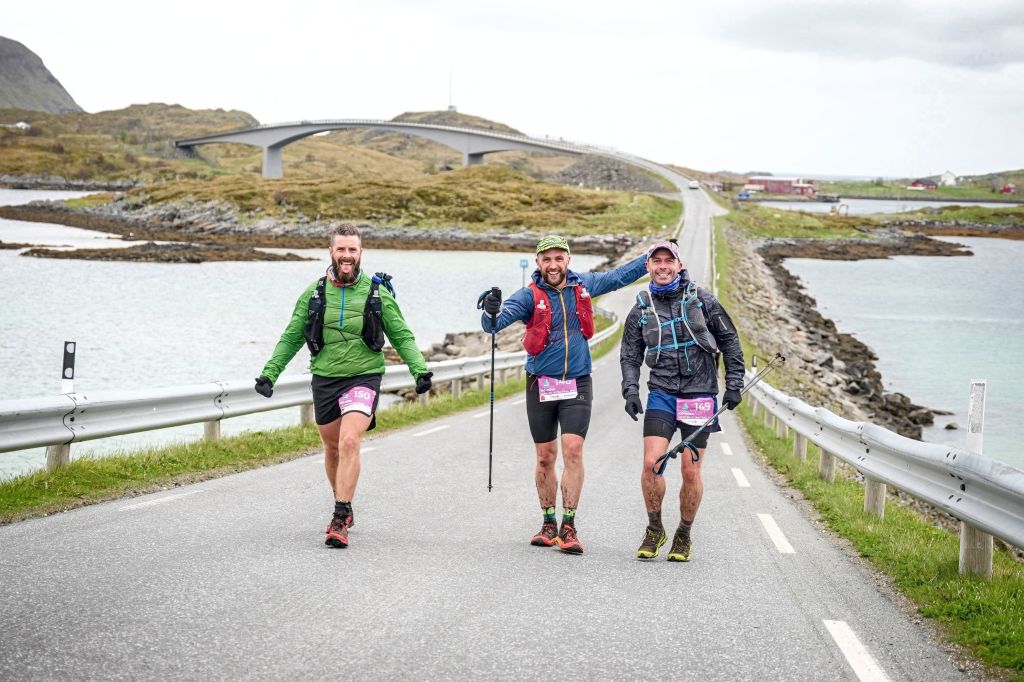

The roads then gave way to gravel tracks and, as we neared the southern edge of the island, we were back into the boggy marshland and forests near the coast. The wind and rain was continually battering us and we found this section particularly cold with the head-on wind. The coastal section was tough going and we were all over the place trying to follow other runners and navigate our own way through the bogs, sometimes slipping knee deep in the stinky mud. I was so thankful for the waterproof socks at this stage!
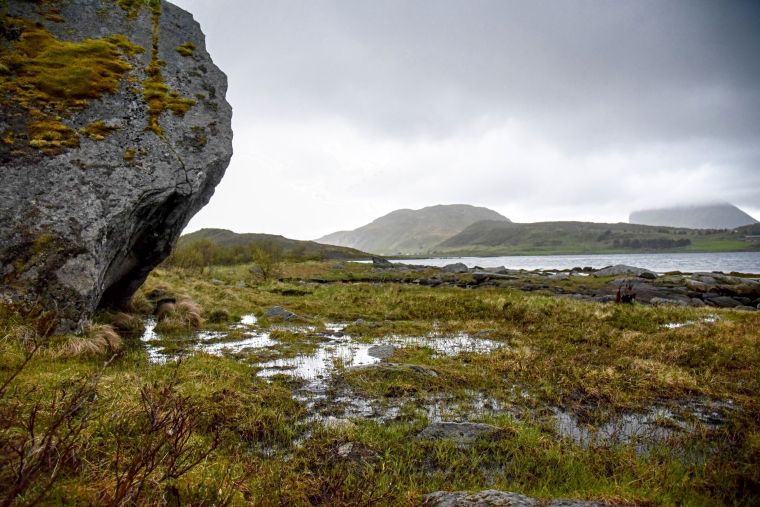
We were very wet now with the heavy rain pelting us from all angles and the ground soaking us from below with every step along the spongy ground. It took us about an hour and a half to cover the 7 or so kms here and emerge back onto some beautiful coastal roads making our way to the next checkpoint at the picturesque fishing village of Nusfjord. We rounded the buildings and into the shelter of the checkpoint.
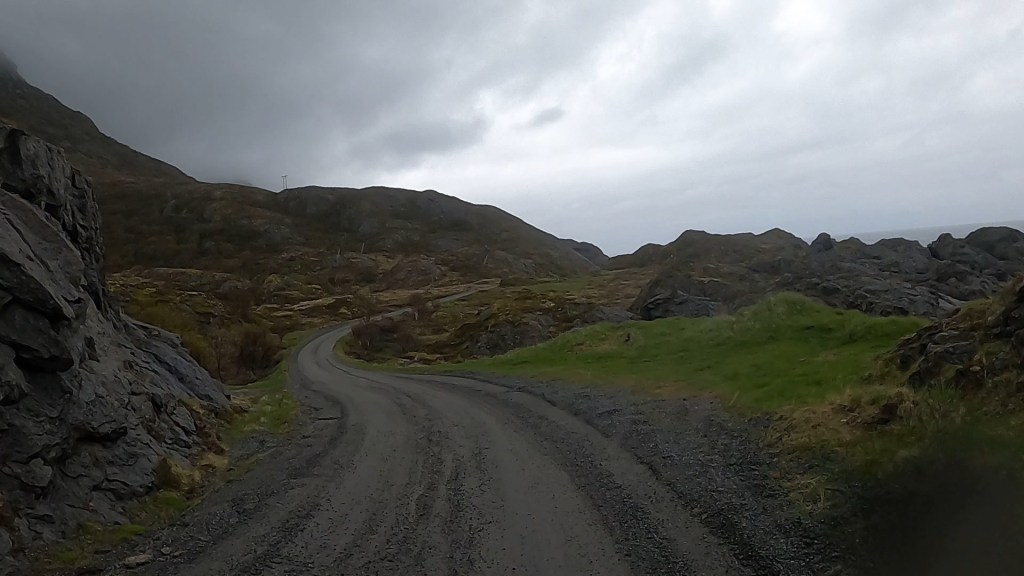

The checkpoint was outside but we made good use of the shelter with heaters and blankets. We could feel the icy wind blowing from the sea so tried not to spend too long tending to our needs. Somewhere in these opening kms I’d noticed my eyesight was a little bit hazy. I’d covered up my left eye and realised everything through my right eye was blurry. It occupied my mind for a while as I’d had something similar back in January when running the Tea Round in the lake district. By the end of the run I’d lost eyesight in my right eye. It came back when I woke the next day and I put it down to a bit of mild snow blindness after running for 13hrs in the snow. I’d made a note to myself to keep being aware of it as I’d a lot longer to run this time and it clearly wasn’t related to snow! We stocked up and refilled on more triple buns, emptied our shoes of excess sediment from the bogs and warmed our hands under the hot water tap. 8 hours and 40km covered, we’d reclaimed a little time and were confident of the impending cut off at Napp. Which was good, because the next section to Napp was said to be particularly challenging and we were warned by he Race Director during the race briefing not to be deceived by the relatively flat route profile for this section. We continued to hold on to that belief that, if we got through this next section, things would become little bit easier. We just set our sights on Napp 19km away and headed off towards our target…

By now it was night time. Night time was a little different here as we were inside the Arctic Circle. During these months of the year, the area receives 24 hour daylight. Not having the changing atmosphere as darkness set in was certainly an unusual experience for us. Hopefully it would mean our tiredness would also be kept at bay and the daylight would help keep us awake – we were tired with the long day of travel, early start and effort of the first 40km. Anything that would keep us moving forward would be welcomed. The road out of Nusfjord continued for a few km, we passed some drying fish (we’d learnt about the fishing industry and exports of dried fish heads to countries like Nigeria from some local runners on the bus ride out) before we headed into the forests and started climbing.
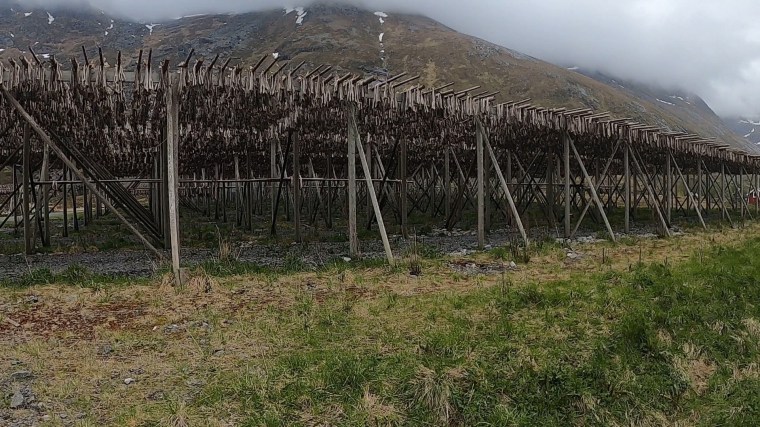
It started with a slow and steady climb on loose scree. We jokingly (seriously) hoped this was the ‘technical’ element. Of course it wouldn’t be. We climbed further and the visibility got less and less as we entered the mist. We barely climbed 150m before we began descending on more of the same terrain with a well defined path and limited visibility. Inevitability more marsh and bogs lay in wait as we left the path and head off track with several more smaller climbs and descents to cover as we made our way back towards the coast.

Once we reached the coastline it was a particularly treacherous coastal section. I just recall boulder after boulder putting further stress on our tiring legs. More ‘light’ scrambling and scaling waterfalls (frustratingly my GoPro battery was playing up here so I’ve no visual records of this whole section, the professional photographer photos however capture a little of this brutal terrain!). It was beautiful and surreal but arduous at the same time. I don’t think I’d imagined that I’d spend so much time on his race on all fours in the water trying to haul my ass upwards. It was very slow going. The weather didn’t relent and we were cold and frustrated. I had three pairs of gloves on and had started ripping the waterproof over-gloves from all the climbing on jagged rocks. After what felt like a lifetime of navigating the coast we found ourselves upon the ‘small’ ladder mentioned in the briefing (mentioned as a safety notice as the bottom was a little broken), but it wasn’t quite what I’d envisaged. It looked huge to me. Not long, just oversized. Like it was made for some Nordic God. Down we went, my hands barely able to wrap around the rungs of the ladder and hopping to safe ground near the bottom. From here the theme continued as we descended further, still battered by the wind and rain. We had now resorted to sitting on our bums to lowered ourselves through cracks and gullies. My waterproof over mittens were now ripped and a hole torn open. I questioned why I buy myself nice kit and then do these events and break everything!
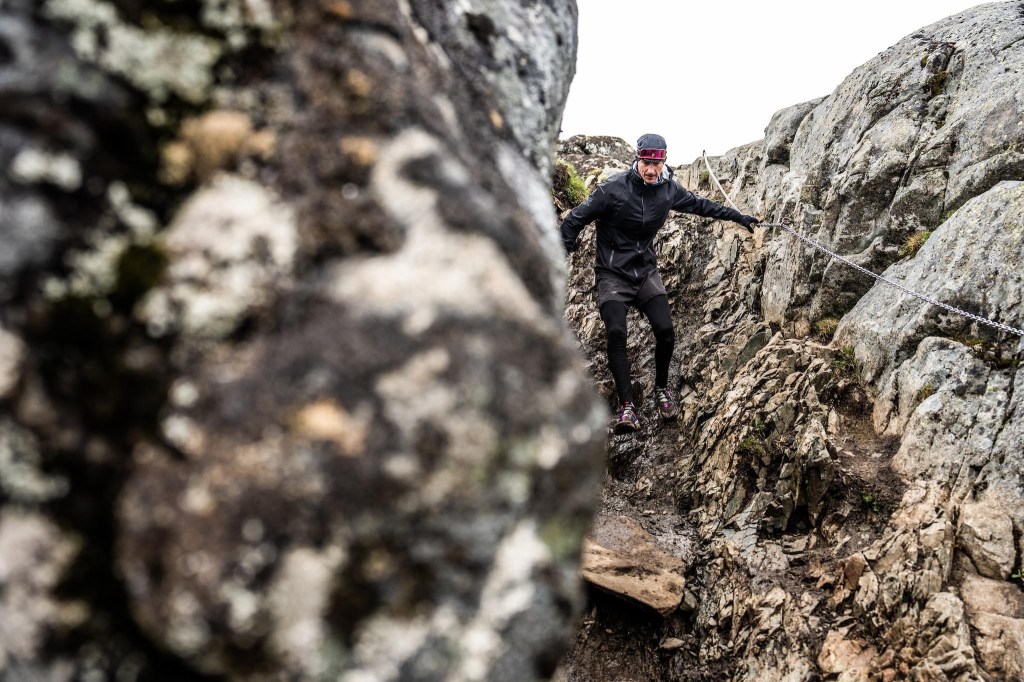

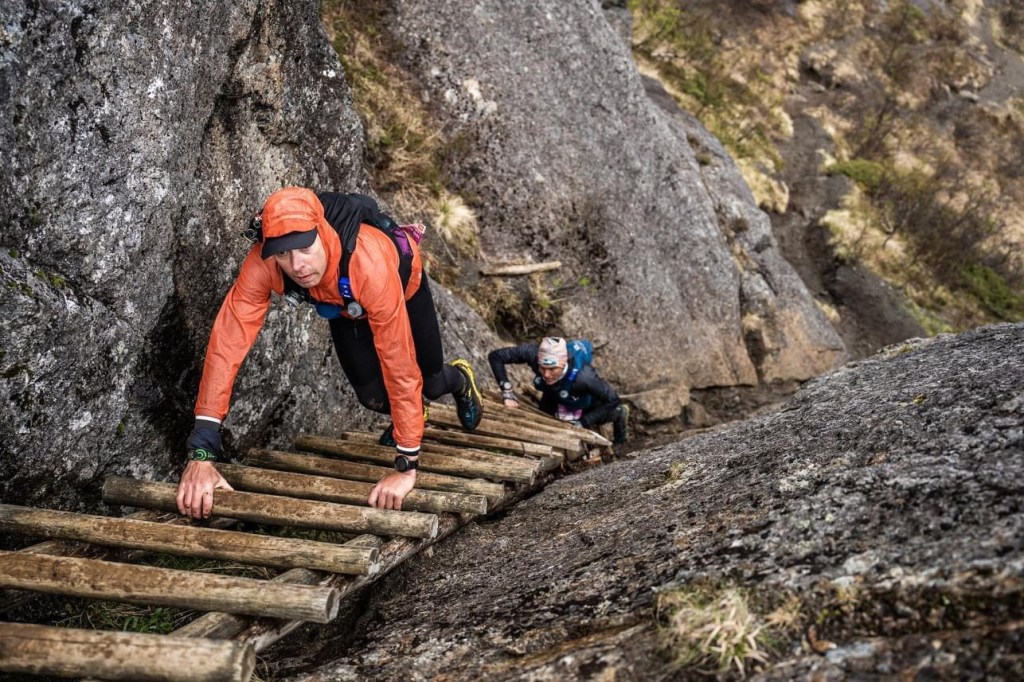
It probably wasn’t as bad as I remember, but it did take us a long time. Looking back it took us about 2 and a half hours to cover 10km along this coast. We had a few small navigation errors as we tried to keep the pink flag markers in sight. I can’t recall how, but it eventually came to an end. Somehow we came out into the village of Napp, ran along the road and found the school where the next checkpoint was. We were relieved, we’d been going for about 12 and a half hours now and were very much in need of a rest. Thankfully Napp was where our first drop bag could be retrieved and we had time. We took about an hour here sorting ourselves out. As we started changing our clothes a thoughtful volunteer started mopping up the water that we were leaking. It was everywhere. She also appeared with a bucket when Matt had a coughing fit. He had to reassure her he was ok. We’d planned this stop ahead and all had plenty of warm, and spare kit to change into. With warm kit on and more soup and triple buns consumed, I set about ‘preparing’ my feet for the next section. I was surprised that they had held up so well. Compared to the others, my feet looked great and in far better shape. The waterproof socks had worked wonders. I cleaned them up and dried them off, applied fresh compeed and taped over my soles, heels and little toes. A fresh pair of socks (more waterproof ones!) and dry shoes finished off the pitstop. I wasn’t making the same mistakes I’d made last week in Romania and was super confident that I was managing my body better.

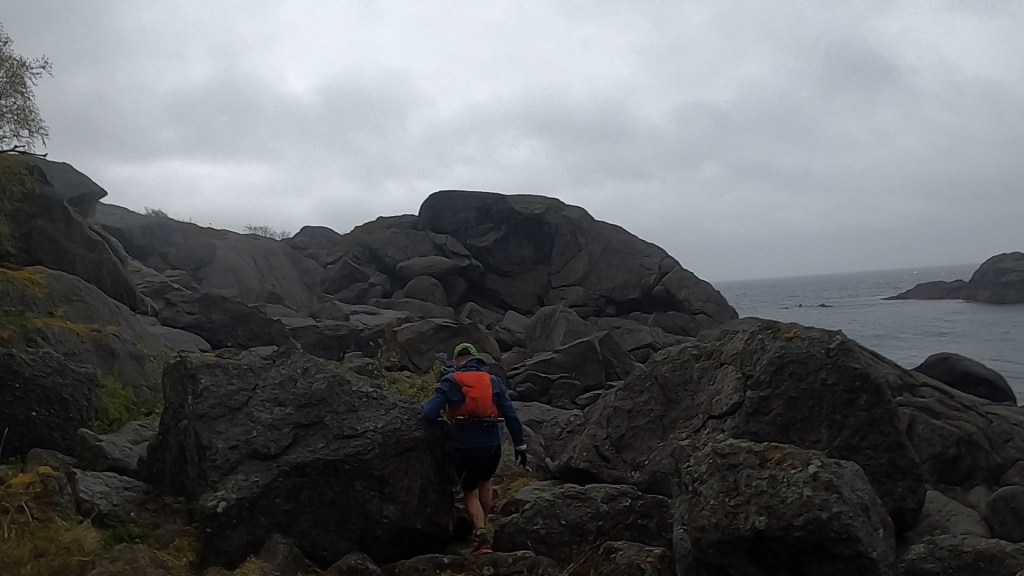
After a good dry out and reorganisation we set off. We even had toasty fingers after warming our gloves a little on a radiator (spare dry gloves would be the one addition I would have made to my drop bags in hindsight!)! From Napp it was a short road section before a 2km stretch through an underground tunnel. By now it was about 2am (so confusing with the day light!) so there was minimal traffic in the tunnel. A lorry did pass us as we were ascending out of it and and the roar and echo was deafening. Being on flat ground, I ran this section with my Buff covering my right eye to try and ‘rest it’ a little bit and hopefully give the eyesight a chance to recover. I looked like a right Pratt.
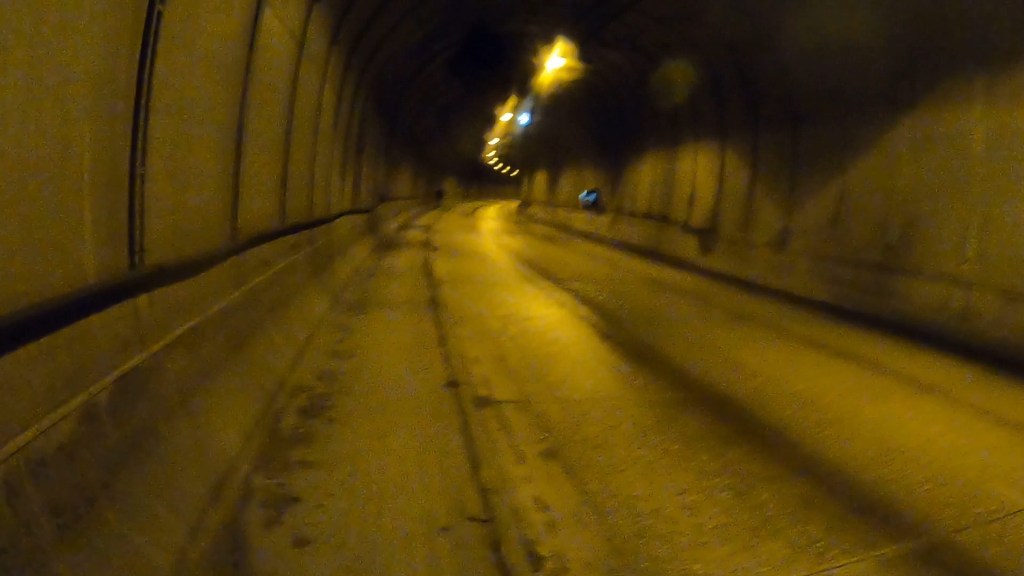

Emerging from the tunnel we looped back on ourselves for a circumnavigation of a big ol’rock – the mountain Offersøykammen. It stood there prominently for the whole section as we ran around it. It started with gentle trails which soon became became wetter and rockier. Before we knew it we were back on boulders, scrambling along the coastline and deviating onto wetter sections where safer (we heard the following day that a runner fell and broke their ribs along this rocky section, we don’t know if that was substantiated or not though). There were a group of runners here. We talked a little bit acknowledging the difficulty of the course and conditions. As the race description says ‘this section is hardly any trail and more technical following the rocky coastline’. It was nothing but accurate! The trail looped us out onto the road which we’d now follow on a diverted course – due to local land restrictions this year, we’d avoid another coastal section to the north and instead loop south to Leknes and Brustranda before re-joining the original route further along the E10 road. We ran through Offersøy and continued on the road to Leknes.

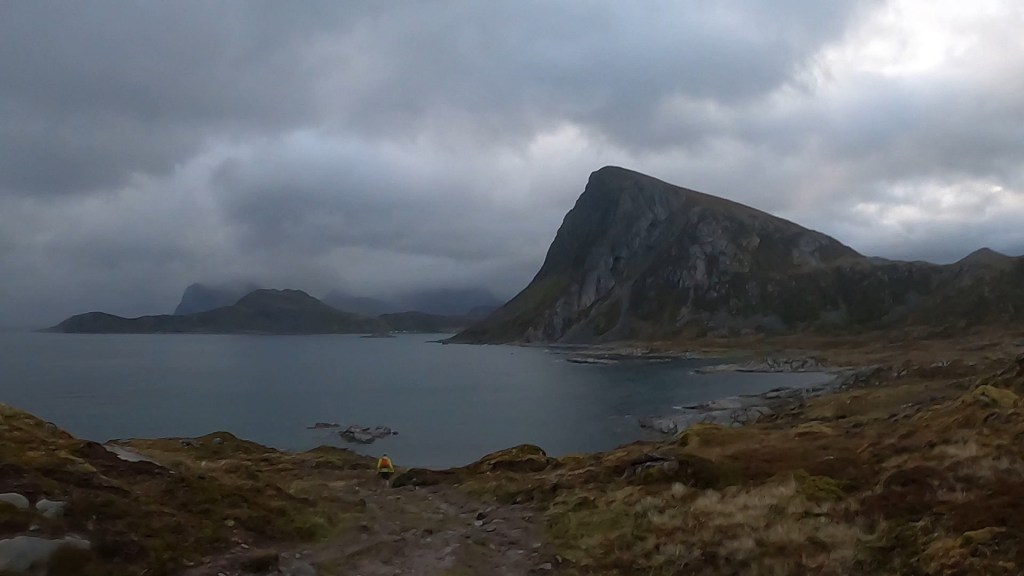
The group of us jogged on in our own paces. Interchanging leaders and varying progress along the road. We felt we put a pretty solid shift in and ran consistently here with short walking breaks as the road inclined. We were aware that these long road sections, as tiring as they were, would be our only chance to gain some ground in a race against the clock. We made good progress, although we could all feel that fatigue was beginning to set in. We’d been up most of the night and the benefits of constant daylight was starting to wane as it was now passed 04:30 in the morning. After hitting the cross roads at Leknes it was a straight line to the checkpoint at the hotel. We entered and the first thing that struck us was that it was so warm. It was great. The smell of warm food filled the room. We discussed having a power nap so found a table and put our heads straight to rest with a timer set for 10 minutes. We needed a recharge. As we woke we went in for the food. There was a sausage (single!) and some wraps that we shared. We tucked in and, at 30 mins, probably stayed a little longer than we should have but we were ready to go again and very much needed to close our eyes for a short while. Most of the same runners who’d arrived before or after us were still here too, so we weren’t overly concerned as we braved the cold once more.

The next section was about 17km and mostly road as we followed the diverted course to Brustranda. Almost immediately my feet started to hurt. I was a little frustrated as they’d felt so good up until now and we were only half way through the race. I’m not sure if it was the long road sections or something else (thicker socks in the shoes?) but I could feel the start of some feet troubles. There wasn’t anything I felt I needed to do immediately, but I couldn’t ignore it for too long! The road running continued with a long up hill hike and a gravity fuelled downhill trot. The rain was intermittent now and we were commenting about how frustrated we were of taking our hoods off and putting them back on again. The temptation to leave it off was high, but it was still very cold, even here inland further from the coast. From the down hill the road continued what felt endlessly. We weaved around the landscapes with more breath-taking views as we made our way back to the coast at Justad. Here we ran again with the ocean on one side and steep dominating mountains on the other. We’d pass through small settlements as we continue along the coastline. A photographer passed in his van, pulled over and snapped us before continuing on again. We sensed (prayed) that the section would soon end but the inlet where the ocean met land seemed so far away in the distance. Our run had become a jog and our jog had become a plod. My feet were on fire and I knew I couldn’t wait beyond the next checkpoint to address them. It took us about an hour and 40 minutes to cover the 10km before we came upon the campsite at Brustranda Fjordcamping and entered the warmth and sanctuary of indoors. We were loving these checkpoints. They were all well stocked, spacious and warm!

As Matt and Paul went about refuelling I went to work on the feet. Blisters had formed on the pads of my feet and on the heels and more hotspots were becoming apparent along the soles. I dried the feet, removed the tape, applied another four compeeds (supplementing those still in place from the last touch up!) and secured with fresh, dry tape and new socks again. It still hurt but I was hopeful it would minimise the damage that was now inevitable. I packed up and we left. No refuelling here for me. I’d have to make do with my own, ample supplies on the go. A slightly quicker pitstop at around 20 minutes this time. We’d covered about 95km by now in just over 20 hours. Despite the extra stops and rests this felt like a good time, even if all the other runners we’d been near had now left us behind and picked up the pace.
As we left we took note of the specifics of the next section. At 24km it was the longest of the route. It also had one of the biggest climbs (although still a mere baby at about 450m) of the route. We started the slow climb. Stopping shortly so Matt could quickly assess and fix his own feet after feeling some discomfort shortly after leaving Brustranda. With a long way to go it wasn’t wise to wait until we next stopped. This gave me the chance to take on some food. As we started off again the climb started to increase in steepness. We meandered through streams and muddy tracks before huffing and puffing our way up into the clouds. The climb was broken up slightly as we made our way towards Vårliheia and Tjønndalsheia. Up top, there was snow on the ground in places but otherwise vast hills of nothingness. The views were endless but the terrain barren and bare. It snowed a little and the wind really picked up so we tried to keep moving and get off the summit as quickly as we could. Mostly off track, we made our way down along soft (of course wet!) lumpy ground similar to somewhere like the Brecon Beacons (Matt and Paul often related the terrain to the Highlands, but I don’t have that experience for comparison).

We lost track of the route a few times and I was slowing behind Matt and Paul on the long twisting downhills. I slipped at one point in comedy fashion. The wet flat grass beneath my feet caused me to slide and turn before I fell backwards on my bum and slid down on my back, coming to a gentle stop in the wet grass. I laughed it off but was a little annoyed at how wet my gloves now were (these were my dry gloves that had been kept dry when wearing the waterproof over-gloves in the rainy sections) and how cold my hands would now be. Still, nothing to do other than pick myself up and try and catch up with the others.
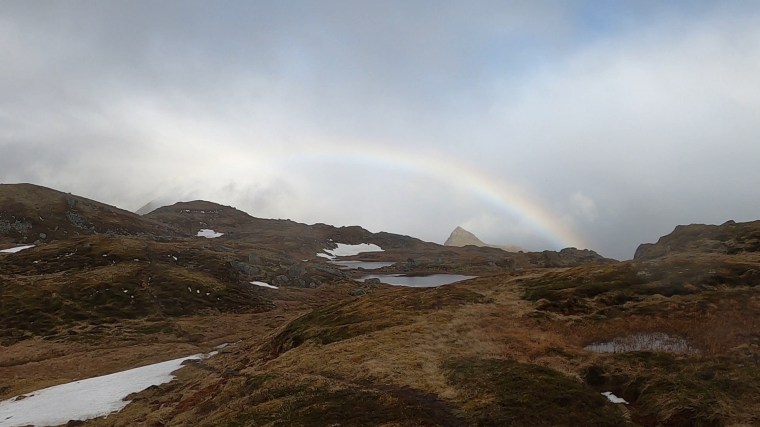
Once regrouped we emerged off the mountain and back on to a road. Here we’d follow the road all the way around the lake Innerpollen. Whilst thankful to once more be on a dry and stable road, it was a good 17km that lay ahead of us. The view of the lake from the mountain put it into daunting perspective – it was a long way to run after more than 100km and almost 25 hours of running!
I find that in most long distance, endurance runs there is a section where the memory becomes a bit of a blank. This navigation around Innerpollen was it for me in Lofoten. For Matt and Paul too I suspect. I can recall the road, the views, how we were feeling and the distorted passage of time. What I can’t recall is how it took us as long as it actually did! Looking back at the GPS data, it took us about 3 hours and 20 minutes to cover about 14km after we got down and away from the mountain. Almost twice as long as the 10km section leading in to Brustranda when we were hurting and plodding around the coast. At the time it felt long, but it didn’t feel like it was that long! We were very tired now. The weather had dried up and it was warmer than at any point in the last 24 hours. The problem now was that all three of us were bonking at the same time. This is quite unusual that we all become so synchronised in our tough and difficult periods. Normally at least one person is in a position to take control and lead, dragging the others on with a bit of intention. Not this time. I think in our bonks we slipped into a state of limited consciousness. By that I mean we were moving forward, just with limited momentum and purpose. We were stumbling side to side, each of us closing our eyes and experiencing little day dreams (I kept jaunting awake when I repeatedly mistook the white lines on the roads as planks of wood at head height that I was about to walk in to!). Matt was doing his best to try and keep us focused, trying to engage us both in conversation. He did a great job, asking simple and specific questions to generate discussions and get us talking. Sadly I don’t think Paul and I were that responsive though. I also recall the endless amount of toilet stops I needed along this road. I don’t think I’ve ever been so hydrated in my life!
As our stumbling continued we focused on the next check point at Torvdalshalsen where we’d get our final drop bag. We’d already agreed that we needed another power nap once we reached the check Point. There would be a few mountain passes and ridges to overcome later in the course and we weren’t in any fit sate at that point to attempt them. As we neared the checkpoint we started to be passed by the leaders of the 50 mile and 50 mile relay races. This gave us a little focus as we clapped and cheered them passed.
In the distance the pink flag at the aid station could be seen. We made our way there, smiled and laughed with the race director and volunteers as we entered, retrieved our bags and went to sleep with our heads on the table once more. I requested 15 minutes on the timer this time and Matt obliged. As we woke we found another lady on the hundred mile race had caught up with us. I was happy for her as I remember her from the aid station at 20km and she was worried about making the 14 hour cut off at Napp. It also shocked us a little into action. She was once more worried about the next cut off, so Matt started crunching the numbers. She was right to be worried. The calculations weren’t good news! We had about 27km to go to the next cut off (around 144km in) but only 6 hours to make the cut off. Given progress throughout the last 28 hours, this was going to be tough. The profile of the next section just made it a struggle before we’d even begun. The next 15km had a lot of the ‘lumpier’ sections of the route with 2 climbs of about 350m each. Sandwiched between them were smaller climbs and descents. Once we climbed the second mountain and descended to the coast we then had a 12km road section to the check point with the cut off. It was going to be tight. We set ourselves a target of 4 hours for the first 15km in the mountains and then 2 hours to navigate the coastal road. It was ambitious but it was all we had. I patched my feet once more, fresh socks and fresh shoes and we headed back out.


By now loads of 50 mile runners had passed us and we could see the route way off in the distance marked by dots of runners ahead of us. Refreshed and up against the clock we were moving with purpose again. The first climb was arguably forgiving in terms of terrain with a well defined single track leading the way. We passed some photographers we remembered from the boat ride the day before and they cheered us on. We were feeling it, the joy of the trails and the pressure of the chase. We were blocking out our pains now and power hiking up the hill and jogging where we could along the flatter parts and descents. In between the two big climbs the trail descents again gave way to the mud and we found our progress slowing. The flatter sections connecting the climbs were off track along more soft, marshy terrain with huge tufts of foliage to clamber over. I felt my right knee twist and twinge. The pain was instant, but I just added it to the list of things to ignore.

As we rounded corners and mini-summits, we followed the lines of runners. Then our Jaw dropped as we saw the ascent into the clouds ahead of us. Silhouettes of runners disappearing into the sky. Like all the climbs out here, the elevation gain was incredibly deceptive. I don’t think that 350m elevation gain is a big climb. The steepness and terrain however tells a different story. We sucked it up and slowly followed the runners into the clouds. The time pressure pushed us on and we summited with about 3 hours to go before the cut off. We were trying to estimate the distance remaining in this section and settled on about 6km or so. We thought a 1 hour downhill 6km was still achievable. Lofoten had different plans for us though. The descent began with a traverse along a ridge. The snow was falling and the wind had picked up again (it was late evening again now). In the race briefing this was one of two sections the organisers were monitoring and would divert us if the bad weather predicted took hold. The weather wasn’t as bad as expected so they deemed it safe for us to continue. Safe, but that doesn’t mean easy!


The ridge was a little intimidating. I’ve been on worse, but probably not after 30 hours of running. I was thankful though that my eyesight had fully returned (it had at some point earlier in the day but I hadn’t acknowledged it!) and I began leading us on our descent. The benefit of the ridge was that we covered significant elevation drop very quickly once we were off the ridge. The downside was it slowed us significantly and we had a real battle on our hands now. I was clock watching constantly, watching the minutes disappear. We sensed we were nearing the coast and the next check point, but the path kept winding us away in all different directions. We were back in wet marsh land, meandering through mud and streams, slowly but surely heading to the coast.
Eventually we hit the road and saw the check point in the café. It was quarter passed 6 in the evening. We were behind our pressured schedule. We had to stop and grab water and refuel. It was chaos we were all over the place, spilling drinks and food and trying the patience of the ever so helpful volunteers. We turned it around in under 5 minutes and set off. We had a little less than 1 hour and 40 mins to cover 12 km on the coastal road.
We still believed, somewhat naively, that we could make it. In our favour was a burning desire not to give up, to keep on going, to not fail. We clang to the hope of ‘its a road section’. Against us were so many factors: 130 km and 30 hours of fatigue and pain in our bodies. Our performance – at the best of times it takes me 55 mins to an hour to complete a 10km road run, to expect near similar performance now was unrealistic. The road was also against as it had ever so slight undulations and climbs, changes in elevation between 5 and 10m were enough to derail our attempts at consistent running. We also knew we couldn’t sustain a running pace for an hour and a half. We’d have to break it up with some walking.
We were plodding along full of beans and belief, maybe less than a km after leaving the check point, when Paul was crunching the numbers and working out our pace. Whilst we felt satisfied with our sub 8 min/km pace, Paul put it into perspective that it still wasn’t good enough. At that pace it would still take us over an hour and a half to cover the remaining 11km. We ground to a halt and walked the long gradual incline we were on. So many thoughts going through our heads as we tried to work out different ways to approach and over come this section. We continued with the run walk strategy and ticked off km after km. Each one we ticked off made the picture ever more clear. We weren’t going to make it in time…
It wasn’t necessarily that we couldn’t make the cut off, we still believed we could. It was more what it meant to make the cut off ever so tightly. After the next check point we still had approximately 20km to cover with the larger climb of the route and a longer mountain ridge section to cover. Before we could attempt that we at least needed a few minutes to stop and refill our water. Getting in at the cut off wasn’t enough, we really needed to arrive at least 5 to 10 minutes under the cut off. We were in a unique juxtaposition now. The more we ran, the more we exhausted ourselves and the harder it came to continually push the pace. But the more likely we’d make the cut off, but also the more likely we’d then crash and burn.
The saga continued as we reached the crossing at Sundklakk. Way off in the distance we could see the Gimsøystraumen bridge which we’d cross before the checkpoint at Kleppstad, our target. I think it was here that reality started to set in and when we really started to accept our fate. We had little over 30minutes remaining. Some 50 mile runners and, to our surprise, two more ladies on the 100 mile race caught us. We really believed we were the back of the pack, well, we were now! The other runners seemed overly optimistic (good for them!) that they were going to make it. They kept telling us it was only a few kms to go. We thought differently, believing it was longer (and were right, it was still about 5 kms before we passed over the bridge and into the check point).

These 5 kms were some of the longest I’ve ever run. Fighting the losing battle against time. Defying ourselves not to give up, but simultaneously accepting more and more with each step that we just wouldn’t make it. The inevitable happened and we gave in to the long walk to the checkpoint. No amount of pushing through the pain and running would change our destiny now. We walked more and ran less. Not long after our walk lost its purpose again and we talked and cheered each runner passing us that still held onto the dimming glow of hope. After a slow walk over the bridge, we arrived at Klepsatdd. It was like a ghost town. The Arctic Triple Trail flag being the only indication that this was the aid station. We tried the doors but couldn’t get in. It looked closed and locked off, chairs on top of tables and darkness inside. Eventually Matt found someone inside who directed us to the door. We still couldn’t get in. In our tired state we’d completely missed another side door that was the way in (in our defence it was clad the same as the building!). The lady greeted us with a very stern “You’re Late”. We asked if we could continue, she didn’t see the funny side and reiterated that we were late.
Part of us did want to continue, we’d come so far after all. But we accepted our fate was sealed. The final few kms of walking had meant we were now well passed the cut off and another one loomed in less than 4 hours after the next mountain ascent and pass. No way would we have made that, even if we had made this cut off in time!
Inside we saw most of the runners who’d passed us on the road. None of them had made it in time either. The volunteers were helpful and gave us warm food and drinks and information as to when a bus would be available to take us back to Svolvaer. There was one leaving soon which we might have been able to jump on but in our politeness we let someone else take the last spaces. We might not have been so polite if we’d realised we’d have to wait another hour for the next one!
Back in Svolvaer we had to walk to the finish line to return our trackers, collect our bags and ponder “what could have been” watching people finish the race. The consolation was a lovely fish burger available to runners which certainly warmed us up and filled our bellies a little. It was now nearing midnight and I was eager to wash the bogs off before getting some sleep and beginning the long journey home the next day…
Reflections
- What an adventure! Lofoten is so wild and remote. The little villages we ran through were so isolated and peaceful. The back drop of towering mountains and the ocean is an incredible combination. It is such a beautiful place and one I’m glad to have explored a little.
- Despite the result, we loved it. The race organisation and volunteers were fantastic (the race briefing was very informative!), the check points and support were brilliant and the location was just unreal!
- The boat ride only made the whole experience even better!
- The terrain out there is gnarly! I’ve done a lot of trail running around the world on some difficult terrain. This was something extra though. I described the mountains like someone had chopped the tops off them and just placed them close to the sea. At only 300m – 500m+ elevation it felt like you were over 2000m up. The mountains very quickly become steep, sharp rocks. The weather up high changes rapidly and varies significantly from that just a few hundred meters lower down. When not in the mountains, it is just wet. Consistently probably the longest I’ve spent in bogs. Far more so than runs in Snowdonia and the notoriously boggy Cheviots!
- A phrase Paul used was “you’re not in Kansas any more Dorothy”. This was so true and to the point. A lot of the ‘big’ European races in the likes of France, Spain, Italy, UK, Austria, Switzerland etc., have exceptionally good trails. If you’re looking for well maintained single track trails, this part of Norway is not for you.
- I thought the road sections would make it easier. I anticipated we’d have greater control over our pace and when we ran and when we walked. They didn’t, they just sapped our energy and enthusiasm. Our bodies had different plans for the roads. That said, the landscape was still incredibly beautiful, even when running along the roads.
- My perception of time has been completely warped. I’d describe this as one of the harder races I’ve done. Although, making the vaguest attempts to compare races – we covered the 100km distance in about 6 hours less time than it took me to run Transylvania 100km the week before. Compared to the more forgiven Alpine and Pyrenees trails, we were on course for a far quicker 100 mile time than what we achieved at Val D’Aran or UTMB (broken ankle aside!). This felt longer and harder in parts than these races. The cut-offs are tighter that is for sure!
- Let’s be straight, we failed. I hate all the self-motivating and congratulatory crap around ‘but I did not fail’ people use when referring to DNFs (Did Not Finish) classifications. We absolutely did fail. We set out to run 100 miles and knew the cut offs. We didn’t finish the course and we didn’t achieve what we set out to. Say what you want, this is a failure. It is black and white for me.
- The failure doesn’t subtract from what we did achieve though. 90 miles and 32 hours – it was one hell of an adventure and exactly what we signed up for. Only 22 of the 47 starters went on and finished the 100mile event.
- Looking back, how do I feel about not finishing? Surprisingly ok about it. Yes it hurt, yes it was frustrating, yes there was and is still disappointment. But I’m ok with it. There doesn’t feel like there is anything to ‘deal’ with. We had the adventure we set out for, we’ve memories that will last a life time. I think I’d feel differently if we were timed out earlier – image it happened at Napp after 56km, then it be pissed and annoyed and would definitely feel a need to try again. As it stands I am completely at peace with it. I don’t feel a desire to got do those last 10 miles.
- Perhaps I’m ok with the DNF because we didn’t give up. Right up to those last few kms we were fighting. If it was an option, we definitely would have continued as well. I believe there is a big difference in not finishing because you are timed out or medically withdrawn and whether you make the decision yourself. Maybe I’m being arrogant, but the decision was made for us, that makes it easier to stomach.
- Where did it go wrong? Immediately after, and for the next few days we couldn’t really figure out. We felt we were ok. Possibly we were just enjoying it too much and took our eyes off the cut offs a little too. Thinking back there are a few clear places. The stops – time at check points was very much needed, but a few 30 min stops plus the hour at Napp certainly affected our overall time. Mainly though, the road section around Innerpollen is where I believe we lost too much time. All three of us succumbing to fatigue and tiredness at the same time meant we just took too long on this section, far longer than it should have. Ultimately though, we just couldn’t cover the terrain quick enough. That is on us. And not something that I think has any real learnings associated to it. The route and course was just better than us and more than we were capable of.
- Norway might be my running nemesis. Trails are a bit different there. Last year Stranda Fjord almost had the better of me (and I would have been timed out there too if it wasn’t for changes to the route due to the weather conditions!). Possibly the hardest race I’ve done. This year Lofoten finished me off. I’d quite like to live in Norway though!
- We got Viking’d. Pillaged and laid to waste.






